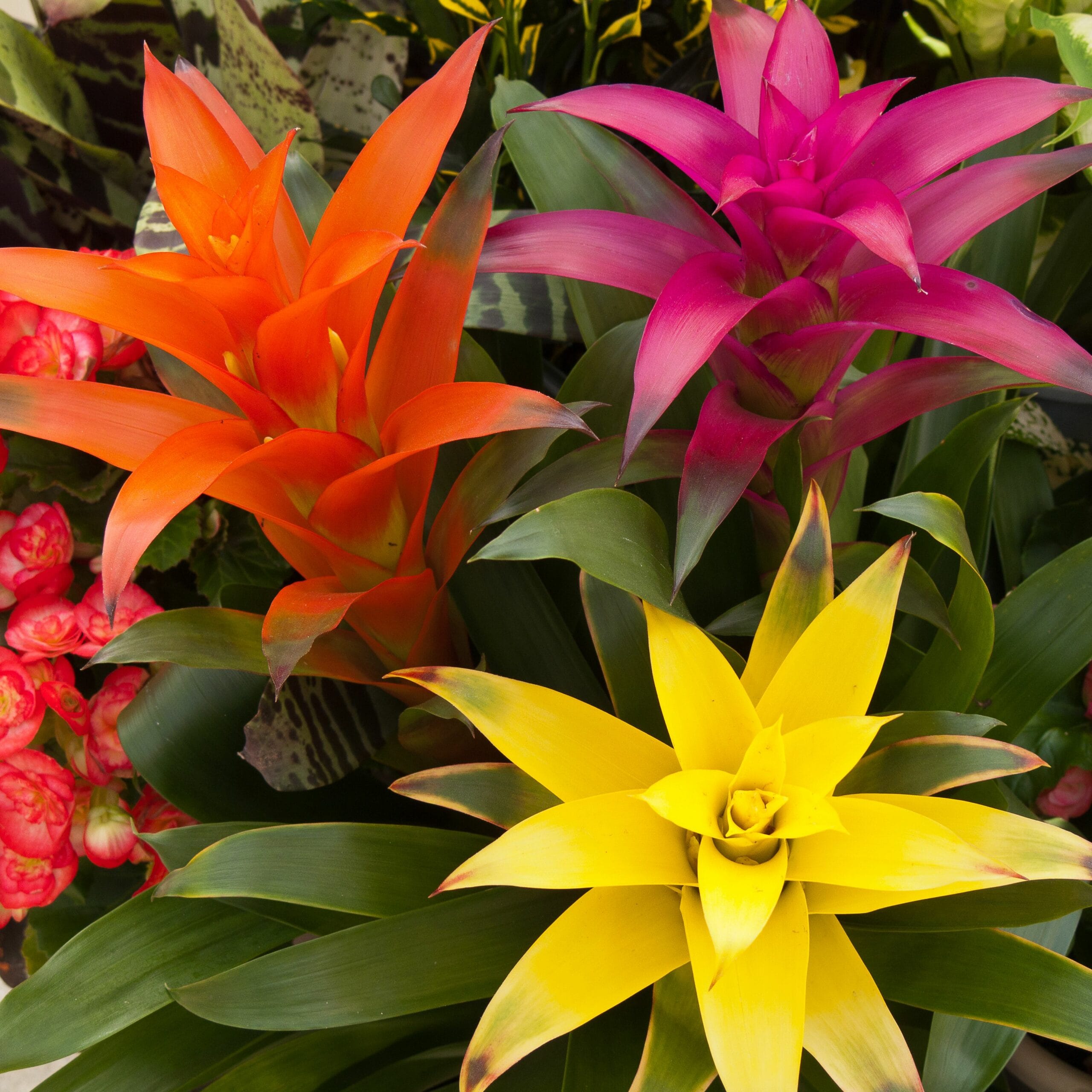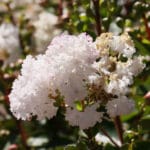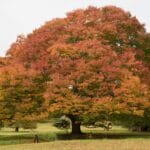Dive into the amazing world of bromeliads! These fascinating plants come in a dazzling array of shapes and colors, from the spiky foliage of Aechmea to the vibrant, torch-like bracts of Vriesea. Whether you’re a seasoned plant enthusiast or just beginning your green journey, this comprehensive guide will help you navigate the diverse world of bromeliads, offering care tips and showcasing the unique beauty of over 200 varieties. Get ready to transform your home into a tropical paradise!
Exploring the Bromeliad Family: A Kaleidoscope of Color and Texture
Bromeliads are more than just a single plant; they’re a diverse family with a stunning variety of forms and lifestyles. Imagine a botanical fashion show where each plant flaunts its most extravagant attire – that’s the experience of exploring the world of bromeliads. Let’s introduce some of the stars of this horticultural spectacle:
Showstopping Bromeliad Varieties
- Aechmea (Urn Plant): Known for stiff, spiky leaves forming a natural “vase,” from which rises a striking pink, orange, or yellow bloom. These dramatic plants demand attention.
- Guzmania: A tropical torchbearer with brightly colored bracts (modified leaves) in fiery hues. The actual flowers are small and hidden within these vibrant bracts.
- Vriesea: These whimsical bromeliads feature feathery plumes in shades of yellow, orange, and red, often speckled or striped, adding a touch of the extraordinary to any collection.
- Neoregelia: The foliage divas of the bromeliad world, boasting leaves in a kaleidoscope of patterns and colors, from deep red to shocking pink and speckled variations.
- Tillandsia (Air Plant): The rebels of the plant kingdom, these epiphytes can grow without soil, absorbing water and nutrients through their leaves. Hang them, mount them – the possibilities are endless.
- Billbergia: These elegant bromeliads display cascading, pendant blooms in shades of pink, purple, and blue, creating a waterfall of color.
- Cryptanthus (Earth Star): These terrestrial bromeliads hug the ground, spreading their star-patterned leaves in intricate mosaics of color.
Essential Bromeliad Care
Maintaining these vibrant plants is surprisingly simple. Think of them as self-contained ecosystems, with their central cups acting as reservoirs.
- Light: Bright, indirect light mimics their natural habitat. Avoid harsh, direct sun.
- Watering: Keep the central cup filled with water, refreshing it regularly to prevent stagnation and mosquito larvae.
- Humidity: Occasional misting satisfies their love for a humid environment.
- Fertilizer: A diluted liquid fertilizer during the growing season provides a helpful boost.
- Propagation: “Pups,” or baby plants, sprout around the base and can be separated and potted to create new bromeliads.
Decoding Your Bromeliad: A Visual Guide to Identification
So, you’re captivated by your bromeliad’s beauty but unsure of its specific type? Identifying your bromeliad is like solving a botanical puzzle, and it’s often easier than you think. Let’s explore how to distinguish between various bromeliad varieties.
Clues to Unraveling Your Bromeliad’s Identity
- Leaf Characteristics: Examine leaf shape (long, broad, or rosette), size, texture (smooth, fuzzy, or spiny), and color patterns. These are the plant’s fingerprints. For instance, long, slender leaves might suggest Aechmea, while broad, paddle-like leaves could indicate Guzmania.
- Inflorescence (Flowering Structure): The inflorescence, or flowering part, provides crucial clues. Consider its shape (spike, branched, or head-like), color, size, and the characteristics of the bracts. The vibrant bracts of Guzmania are a key identifier.
- Growth Habit: Is your bromeliad an epiphyte, growing on other plants like many Tillandsia (air plants), or terrestrial, growing in soil like Cryptanthus? This reveals much about its natural environment.
Advanced Identification Techniques
For more challenging cases, a closer examination might be necessary. Tiny scales on the leaves, called trichomes, can be observed with a magnifying glass. The shape and arrangement of individual flowers within the inflorescence also provide further clues.
If you’re still stumped, online resources, visual identification keys, and bromeliad communities can provide expert assistance. Don’t hesitate to reach out – plant identification is an ongoing learning process!
Bromeliad After Bloom Care: Propagating Pups & Extending Plant Life
Your bromeliad’s vibrant bloom has faded, but the show isn’t over! It’s time for a new chapter: the creation of “pups,” or baby bromeliads. Let’s explore how to care for your bromeliad after it blooms and nurture the next generation.
The Bromeliad Life Cycle: From Bloom to Pups
Bromeliads bloom only once, putting all their energy into that magnificent display. Afterward, the mother plant focuses on producing pups around its base, ensuring its legacy continues.
Nurturing the Next Generation
Patience is key when pups appear. Allow them to grow to about one-third the size of the mother plant before separating them. This ensures they’ve developed sufficiently to thrive independently.
Separating and Potting Pups
Using a clean, sharp knife, carefully detach pups with some roots attached, and plant them in individual pots with well-draining mix.
Caring for Your New Bromeliad Family
Continue providing bright, indirect light, and water regularly, keeping the soil lightly moist. Feed sparingly with diluted fertilizer. The mother plant will gradually decline, but can continue to thrive for some time with proper care.
Why Bromeliads are the Perfect Low-Maintenance Indoor Plant
Thinking of bringing a touch of the tropics indoors? Bromeliads are ideal houseplants, surprisingly easy to care for and perfectly suited for indoor life.
Bromeliad Benefits: A Perfect Fit for Indoor Living
- Low Maintenance: Pest-resistant and tolerant of drier conditions.
- Space-Saving: Compact size ideal for apartments and smaller spaces.
- Air Purifying (Likely): Some research suggests they may contribute to cleaner air.
Choosing Your Bromeliad Companion
For beginners, Guzmania, Neoregelia, and Vriesea are excellent choices. The pineapple (Ananas comosus) is also a bromeliad, though fruiting indoors is a challenge.
Simple Bromeliad Care
Water into the central “cup,” allowing it to dry slightly between waterings. Avoid overwatering. Bright, indirect light is ideal. Use well-draining soil and fertilize sparingly.
Decorating with Bromeliads
Bromeliads enhance any space, from terrariums to driftwood displays. Explore their versatility and transform your home into a tropical haven.
Explore the captivating beauty and toxicity of the adelfa nerium oleander. Journey through the night sky and explore the celestial wonders of the big dipper and orion’s belt.
- Unlock Elemental 2 Secrets: Actionable Insights Now - April 2, 2025
- Lot’s Wife’s Name: Unveiling the Mystery of Sodom’s Fall - April 2, 2025
- Photocell Sensors: A Complete Guide for Selection and Implementation - April 2, 2025

















2 thoughts on “Your Ultimate Guide to Bromeliad Plant Types: Discover 200+ Varieties with Care Tips & Pictures”
Comments are closed.